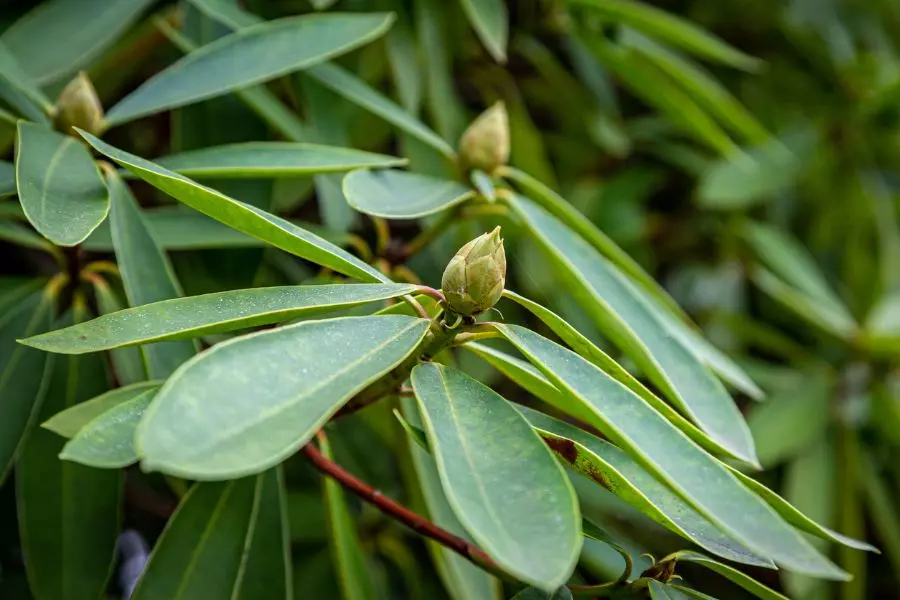7 Reasons Your Rhododendron Dying
Revive your rhododendron and keep it thriving
Need help with your yard? Get your free quote today!
Get a Free Quote!
Rhododendrons are a stunning addition to any garden, known for their vibrant blooms and lush evergreen foliage. However, these hardy shrubs can sometimes show signs of decline, leaving gardeners wondering, “Why is my rhododendron dying?”
If your rhododendron is struggling, there are likely underlying issues that need to be addressed. This guide will help you identify common problems and solutions to revive your rhododendron and keep it thriving.
Common Reasons Why Your Rhododendron May Be Dying
1. Improper Planting Location
Rhododendrons are sensitive to their growing environment. They require:
- Partial Shade: Too much direct sunlight can scorch the leaves, while deep shade may limit flowering.
- Well-Draining Soil: Waterlogged roots can lead to root rot.
- Acidic Soil: Rhododendrons prefer soil with a pH of 4.5–6.0.
Signs:
- Yellowing leaves.
- Poor growth or wilting.
Solution:
- Relocate your rhododendron to a spot with morning sun and afternoon shade.
- Amend soil with organic matter or compost to improve drainage.
- Test and adjust soil pH with sulfur or specialized fertilizers if necessary.
2. Overwatering or Underwatering
Watering issues are one of the most common reasons for a struggling rhododendron.
- Overwatering: Leads to waterlogged roots and fungal infections.
- Underwatering: Causes leaf curl, browning, and overall decline.
Signs:
- Overwatering: Yellowing leaves, root rot, or a soggy soil surface.
- Underwatering: Crispy, curled leaves or dry soil.
Solution:
- Ensure the soil remains moist but not waterlogged.
- Water deeply once or twice a week, depending on weather conditions.
3. Poor Soil Conditions
Rhododendrons are shallow-rooted and sensitive to poor soil quality. Heavy clay or compacted soil can limit root growth and drainage.
Signs:
- Stunted growth.
- Declining health despite proper care.
Solution:
- Improve soil structure by adding organic matter like compost, leaf mulch, or pine bark.
- Avoid planting too deeply, as shallow roots need to access oxygen.
4. Nutrient Deficiency
Rhododendrons are heavy feeders, and nutrient imbalances can lead to poor health.
Signs:
- Yellow leaves with green veins (iron deficiency).
- Stunted growth or pale leaves (general nutrient deficiency).
Solution:
- Use a fertilizer formulated for acid-loving plants, applied in early spring and mid-summer.
- Avoid over-fertilizing, which can damage roots.
5. Pests and Diseases
Pests and diseases can wreak havoc on a healthy rhododendron if not addressed promptly.
- Common Pests: Spider mites, lace bugs, and vine weevils.
- Common Diseases: Root rot, powdery mildew, and leaf spot.
Signs:
- Chewed leaves or discoloration (pests).
- Blackened roots or fungal growth (root rot).
- White powdery coating or black spots on leaves (fungal infections).
Solution:
- Treat pests with insecticidal soap or horticultural oil.
- Address fungal issues with fungicides and improved air circulation.
- Remove and dispose of severely affected leaves or branches.
6. Winter Damage
Victoria’s mild winters are generally kind to rhododendrons, but sudden cold snaps or frost can damage plants.
Signs:
- Brown, scorched leaves.
- Split bark or dead branches.
Solution:
- Protect rhododendrons from frost by applying mulch and using burlap covers during extreme cold.
- Prune damaged branches in spring to encourage new growth.
7. Pruning Issues
Improper or neglected pruning can affect your rhododendron’s health.
Signs:
- Weak, spindly growth.
- Lack of blooms.
Solution:
- Prune immediately after flowering to shape the plant and remove deadwood.
- Avoid heavy pruning, which can stress the plant.
Preventing Future Problems
To keep your rhododendron healthy and vibrant, follow these tips:
- Choose the Right Location: Ensure your rhododendron is planted in a suitable spot with partial shade and well-draining, acidic soil.
- Water Wisely: Maintain consistent moisture without overwatering.
- Fertilize Appropriately: Use a balanced fertilizer for acid-loving plants.
- Prune Regularly: Remove dead or damaged branches and shape the plant after flowering.
- Monitor for Pests and Diseases: Address issues promptly with appropriate treatments.
Need Help with Your Rhododendron?
Caring for rhododendrons can be challenging, but with proper attention and care, these beautiful shrubs can thrive in your garden for years. If your rhododendron is struggling and you’re unsure how to revive it, Ascent Yard Care can help.
Our expert team specializes in plant care, pruning, and pest management, ensuring your rhododendrons and other garden plants stay healthy and beautiful.
Contact Ascent Yard Care today for professional gardening services in Victoria, BC, and let us help your rhododendrons flourish!
